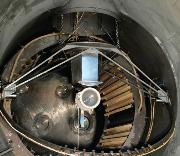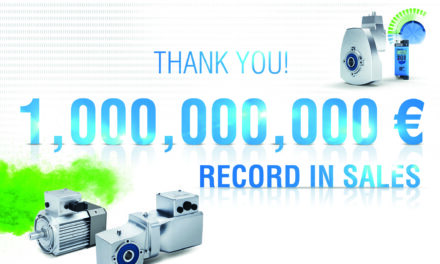 QinetiQ manufactures ion thrusters which harness electrical energy to accelerate propellant to high velocity. Despite small acceleration levels, in space these devices propel and position spacecraft with extreme accuracy and efficiency.
QinetiQ manufactures ion thrusters which harness electrical energy to accelerate propellant to high velocity. Despite small acceleration levels, in space these devices propel and position spacecraft with extreme accuracy and efficiency.
One of the company’s current Electric Propulsion (EP) developments is in support of the European Space Agency’s BepiColombo interplanetary mission to Mercury where ion thrusters will be used to manoeuvre planetary and magnetospheric orbiters. The aim of the mission is to explore and understand the composition, geophysics, magnetosphere and evolution of Mercury.
QinetiQ’s Large European Electric Propulsion test facilities (LEEP) are used for the development, prototyping, manufacture, testing and qualification of electric propulsion thrusters, systems and associated equipment. Here, National Physical Laboratory developed thrust balances ensure calibration results are traceable to national standards, and cryogenic and vacuum chamber equipment is used to simulate the conditions faced by the thrusters in deep space. Highly specialised test equipment is used here, including vacuum chambers up to 3.8m inside diameter and 10m in length, where motion controlled beam probe arrays are used to characterise the ion flux and beam divergence of the thrusters.
For the beam probe array, McLennan supplies high vacuum and extreme temperature compatible stepper motors and planetary gearboxes with specialist feedback devices, stepper drives and controls to precisely position the probe arm with its array of plasma diagnostics sensors. The two synchronised motor/gearbox assemblies are mounted on either side of the chamber’s horizontal axis and rotate the probe arm to track a vertical path through the beam.
The company supplies 10-7 torr vacuum compatible, 80mm diameter stepper motors from Phytron (its German distribution partner), fitted with vacuum prepared high precision planetary gearboxes. Both resolver and optical encoder devices are used to provide the levels of redundancy needed by the application. The resolver is mounted on the output shaft side of the gearbox where its close proximity to the payload provides high accuracy rotary position that is unaffected by gearbox backlash over the 170° working range of the probe arm. The optical encoder is fitted on the rear shaft of the stepper motor to provide multi rotation angular positioning and stall detection.
All devices supplied meet the 10-7 torr vacuum specification as well as temperature down to -160°C. The dual output shaft motors and all in-vacuum mounted components are modified with outgassing vents to avoid pockets of trapped gas, and the planetary gearboxes use selected materials and special lubrication. The motion control and stepper drive is located outside of the chamber with a special Kapton insulated cable arrangement that runs through a hermetically sealed bulkhead feedthrough.
Mclennan Servo Supplies
T: 08707 700700



